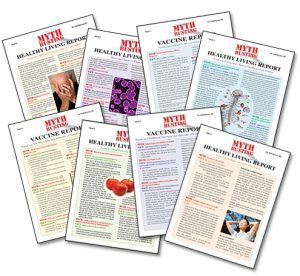There are only two chiropractic techniques
There are only two chiropractic techniques. “What? You ask, aren’t there nearly one hundred?”
Well, yes – there are many “named” techniques or methods of locating and/or correcting subluxations – but if we consider the philosophy behind techniques we will discover that they all fall into one of two philosophical categories. All techniques are either vitalistically based or mechanistically based.
This division is not unique to chiropractic; nearly every healing art is based on mechanism or vitalism.
Mechanist? Vitalist?
For over 2,500 years vitalism (also known as empiricism) and mechanism (also known as rationalism) have been battling for the hearts, minds and wallets of the public. At various times in history one has been dominant over the other; presently we appear to be in a transitional period, shifting from mechanism to vitalism.
Whether the doctor is conscious of it or not, every healthcare system and every chiropractic technique is based upon vitalist or mechanist philosophical assumptions; philosophy guides therapeutics.
Many people don’t realize that science basically involves assumptions and faith … nothing is absolutely proved.
Charles Townes, Nobel Prize winner in Physics and Templeton Prize winner
Vitalist assumptions
• Vitalists (empiricists) view the body as intelligent, responding with a purpose to environmental stress using symptoms to maintain and regain homeostasis. Symptoms are therefore seen as intelligent responses to stress and are not to be suppressed or eliminated.
• Living bodies are overwhelmingly complex with millions and billions of interconnected and rearranging parts in constant flux to maintain (and regain) homeostasis. Because of this constant flux, understanding what is happening in a patient at any one moment in time is impossible.
• The whole is greater than the sum of its parts, expressing qualities the parts cannot; therefore studying the parts will give incomplete information about the whole (at best).
• Being greater than the sum of its parts the whole cannot be reduced to and fully understood by physics, mathematics, mechanics, chemistry and other intellectual disciplines.
• Vitalists claim that the only way to understand the living organism is to observe how it reacts in sickness and health. Vitalists learn from the whole and especially the unique, complex, idiosyncratic patient before them.
• For these reasons vitalistic care is personalized to the unique needs of the individual.
What do mechanists believe?
• Mechanists (rationalists) view the body as a machine that is largely passive before environmental onslaughts.
• Mechanists view symptoms as undesirable signs of breakdown that need to be removed or eliminated.
• Like any machine the whole is equal to the sum of the parts; by understanding the parts, by dissecting and using the disciplines of mathematics, chemistry, mechanics, and physics we will know the whole.
• Like any machine the body’s parts will break down and they can be replaced or manipulated without regard to the whole.
• Mechanists develop theories about the body and apply them to all bodies and all people, largely ignoring individual idiosyncrasies.
Whence they came
Mechanist techniques/healthcare systems are invented (intellectually deduced) while vitalist techniques/healthcare systems are discovered (accidentally found to work). Mechanist techniques are based on educated intelligence while vitalist techniques are based on innate intelligence.
Medical examples
Coronary artery bypass surgery/CABS (mechanistic – invented) is based on the assumption that blocked coronary arteries could be replaced as a plumber replaces a clogged pipe. CABS is linked to brain damage and has not been proven to decrease deaths.
Chelation therapy (vitalistic – discovered) was used to cure heavy metal poisoning but was accidentally found to reverse coronary artery disease by removing plaque from arteries. It has been successful in hundreds of thousands of cases.
Chiropractic examples
Mechanist chiropractic techniques begin with an intellectual concept of what and/or where the subluxation is and how it should be corrected. These approaches determine in advance (a-priori) what the body wants.
For example, techniques that are based on the theoretical or mathematical assumption of where “ideal” spinal curves or segments are “supposed” to be based on x-ray or palpation analysis are mechanistic. Techniques that assume that all locked spinal areas need release (such as diversified and “flying seven”) are mechanistic.
Vitalistic chiropractic techniques do not use intellectual concepts to determine what a subluxation is and what its mechanisms are. A subluxation to vitalists is a metaphor for interference in life expression. The vitalist does not know exactly what a subluxation is or what care is needed in advance; the care is a-posteriori – after the fact.
Vitalists rely on the body’s reactions to locate and correct subluxations/interference.
Vitalistic chiropractic technique practitioners do not know what the body wants or needs in advance. By testing or “asking” the body they determine what procedures they are going to use.
Vitalistic practitioners tailor their care on the unique needs of the patient.
“Asking” the body
Binary biofeedback is at the same time the most advanced and the most ancient method of care. Various professions “ask” the body in different ways. For example, homeopathy uses the “proving” – a feedback based on the symptoms the patient exhibits. CranioSacral Therapy employs “still point” to “ask” the body. Applied kinesiology employs the muscle reflex. Biofeedback methods include the short leg reflex, the occipital drop, skin resistance, and many others.
With the use of biofeedback, the body tells the practitioner what needs correcting or adjusting, in what order, and if the correction was accomplished. Vitalistic techniques are highly individualized.
The challenge of vitalistic techniques
Vitalistic techniques are ideally an open system that may take us anywhere: to the spine, cranium, structure, meninges, emotions, dehydration, dental issues, toxicity, parasites, organs, nutrition, and other areas of interference. The doctor must be open to exploring; the practitioner is limited by the questions asked based on their awareness. For example, a doctor who does not know the various brain structures will not know to ask about them; a doctor unschooled in Chinese medicine will not pick up meridian imbalances.
It is not easy to be open to “wherever the body takes us.” Intellectual mechanisms are useful to help us organize our thoughts and give us a framework in which to work. But at the same time we risk being limited by the prevailing dogma of the day. DD and BJ Palmer strove to break out of the dogmas of their age and we need to be open to exploration as well.
The challenge of mechanistic techniques
Mechanistic techniques are based on intellect (hence they are called “rationalist”) and risk falling into rigidity. The practitioner risks becoming narrow-minded and intellectually defensive, refusing to acknowledge the failures and limitations of the system he is using. The practitioner risks ignoring the patient in his use of systems and mechanisms (i.e. “the operation was a success but the patient died” mentality.)
Educated vs. innate
Mechanistic techniques are “educated intelligence” based. Vitalistic techniques are “innate intelligence” based.
Chiropractic philosophy is vitalistic; Chiropractic was accidentally discovered by DD Palmer.
Purely intellectual, mechanistic techniques are not congruent with chiropractic.
We say in chiropractic we have an innate intelligence – why don’t we use it? With vitalistic techniques, especially Koren Specific Technique (KST) we can ask the body where its interference or subluxations are located, the order of correction, and what approaches are best suited.
Zen balance
In the ancient Zen symbol life is considered a balance of opposites, of yin and yang – heaven and earth, female and male, hot and cold, flexibility and rigidity, emotion and intellect, etc. In the symbol there is always some yang in the depths of yin and always some yin in the depths of yang. In the same way, all vitalist techniques include some degree of rationalism (intellectual analysis) and all rationalist techniques include some degree of vitalism (feedback from the body); rationalists/mechanists rely mostly on intellect to approach understanding of the unknowable body while vitalistis/empiricists rely mostly on innate (body wisdom) to guide them in their care.
Which technique is more successful?
Finally we must ask which approach works better. The care that is more tailored to the individual needs of the patient has historically had better results with minimal adverse reactions. The more vitalistic a healthcare system or technique, the better the results.
Suggested reading
The historical division of healthcare has been best explored in by Harris Coulter, Ph.D. in his magnum opus Divided Legacy, Vol. 4.
Tedd Koren, D.C., is the developer of Koren Specific Technique the fastest growing vitalistic technique in the profession. For information, go to www.korenspecifictechnique.com. Dr. Koren also writes patient education materials. Go to www.korenpublications.com. Dr. Koren can be reached at tkoren1@aol.com.
Tedd Koren, D.C.
3 Comments
Leave a Comment Cancel Reply
Chiropractic: Bringing Out The Best In You! 10th Edition
Increase retention and referrals by educating your patients – they’ll value your care, stay in care and refer others! We’ve…
More InfoMyth Busting Reports – Value Pricing Set
We do the research. You teach your patients. When you are asked about these hot topics, you’ll have ready answers…
More Info


Nassim Nicholas Taleb has a pretty interesting take on empiricism and rationalism in medicine. The link below will take you to a chapter from his upcoming book, refers heavily to ideas developed in earlier chapters but even if you don’t get 90% of what he’s saying (like me) you can catch the drift, and it’s pretty inspiring for a chiropractor to hear such an original and heavy thinker telling our story. I doubt he knows much about chiropractic or would take it very seriously, but who knows.
http://www.fooledbyrandomness.com/medicine.pdf
I think you missed a third one, the mechanical-vitalistic which combines both.
Really great, timely article for me, Tedd. Thank you!/Herby